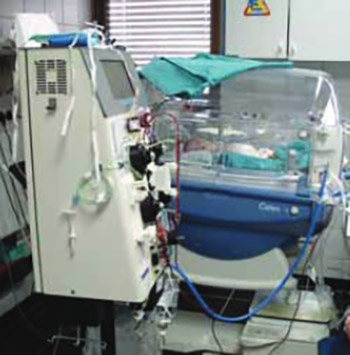Acute Kidney Injury in the Intensive Care Unit
DOI:
https://doi.org/10.17305/bjbms.2010.2639Keywords:
acute kidney injury, intensive care unit, renal replacement techniqueAbstract
Acute kidney injury (AKI) is a common clinical syndrome with a broad aetiological profile. It complicates about 5% of hospital admissions and 30% of admissions to intensive care units (ICU). During last 20 years has been a significant change in the spectrum of severe AKI such that it is no longer mostly a single organ phenomenon but rather a complex multisystem clinical problem. Despite great advances in renal replacement technique (RRT), mortality from AKI, when part of MOF, remains over 50%. The changing nature of AKI requires a new approach using the new advanced technology. Clinicians can provide therapies tailored to time constraints (intermittent, continuous, or extended intermittent), haemodynamic, and metabolic requirements and aimed at molecules of variable molecular weight. Peritoneal dialysis (PD) is technically the simplest form of RRT and is still commonly used worldwide. The problems include difficulty in maintaining dialysate flow, peritoneal infection, leakage, protein losses, and restricted ability to clear fluid and uraemic wastes. PD is the preferred treatment modality for AKI in pediatric practice. Patients that are hemodynamically stable can be managed with intermittent hemodyalisis (IHD), whereby relatively short (3 to 4 h) dialysis sessions may be performed every day or every other day. Patients who are haemodynamically unstable are best managed using continuous renal replacement therapies (CRRT), which allow for continuous fine-tuning of intravascular volume, easier correction of hypervolemia, better solute removal, more accurately correction of metabolic acidosis, and offers possibilities for unlimited energy support. Recently, “hybrid” or sustained low-efficiency dialysis (SLED) was introduced as a method which combines the advantages of IHD with those of CRRT. In this technique, classic dialysis hardware is used at low blood and dialysate flow rates, for prolonged period of time (6 to 12 h/day). SLED offers more haemodynamic stability, better correstion of hypervolaemia, and more adequate solue removal, compared with IHD. In conclusion, AKI in the ICU is increasingly a component of sepsis and MSOF, and the development of rational strategies for initiation, dosing, and effective delivery of RRT in this setting is among the greatest challenges facing nephrologists and intensivists today.
Downloads














